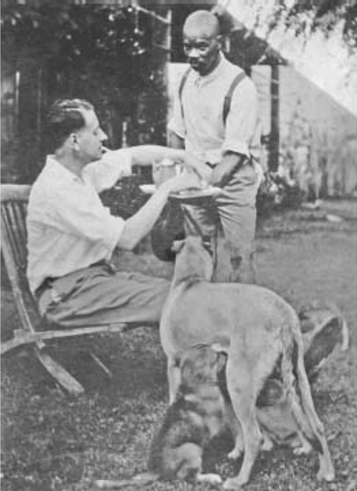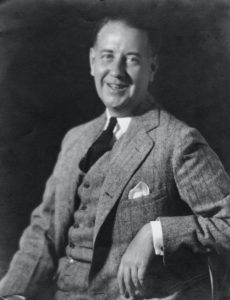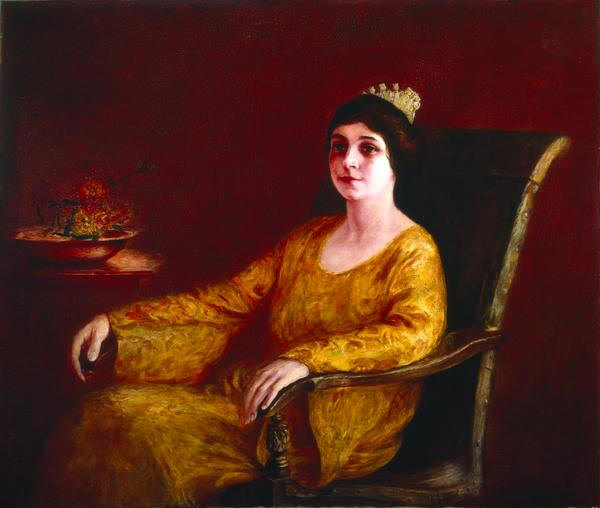

Queer Places:
612 Royal St, New Orleans, LA 70130
534 Madison St, New Orleans, LA 70116
Shadows-on-the-Teche, 317 E Main St, New Iberia, LA 70560
3 Christopher St, New York, NY 10014
Magnolia Cemetery
Baton Rouge, East Baton Rouge Parish, Louisiana, USA
 Lyle
Chambers Saxon (September 4, 1891 – April 9, 1946) was a respected New Orleans writer and journalist
who reported for The Times-Picayune. It has been suggested that his only great love was his childhood friend,
George Favrot, who died young
in 1925. Other sources maintain that he had a sexual relationship with Joe Gilmore, his long-time black valet. Biographer James W. Thomas interviewed many of Saxon's closest friends and concluded, "Saxon'shomosexual affairs were discreet, never a problem for his heterosexual friends, and not a significant partof his literary life."
Saxon’s biographer Chance Harvey says that Thomas C. Atkinson of Baton Rouge
told her that Saxon and his friend George Favrot were caught “in drag” and
expelled from school, but that Atkinson offered no corroboration.
Lyle
Chambers Saxon (September 4, 1891 – April 9, 1946) was a respected New Orleans writer and journalist
who reported for The Times-Picayune. It has been suggested that his only great love was his childhood friend,
George Favrot, who died young
in 1925. Other sources maintain that he had a sexual relationship with Joe Gilmore, his long-time black valet. Biographer James W. Thomas interviewed many of Saxon's closest friends and concluded, "Saxon'shomosexual affairs were discreet, never a problem for his heterosexual friends, and not a significant partof his literary life."
Saxon’s biographer Chance Harvey says that Thomas C. Atkinson of Baton Rouge
told her that Saxon and his friend George Favrot were caught “in drag” and
expelled from school, but that Atkinson offered no corroboration.
Once, when interviewed, Richmond Barthé indicated that he was homosexual. Throughout his life, he had occasional romantic relationships that were short-lived.[37] In an undated letter to Alain Locke, he indicated that he desired a long-term relationship with a "Negro friend and a lover". The book Barthé: A Life in Sculpture by Margaret Rose Vandryes links Barthé to writer Lyle Saxon, to African American art critic Alain Locke, young sculptor John Rhoden, and the photographer Carl Van Vechten. According to a letter from Alain Locke to Richard Bruce Nugent, Barthé had a romantic relationship with Nugent, a cast member from the production of Porgy & Bess.[38]
Homosexual characters or subjects do not appear anywhere in his published work. Saxon is his most unguarded in letters he exchanged with his friend artist Weeks Hall, master of Shadows on the Teche, his ancestral family home on Bayou Teche in southwestern Louisiana. Saxon was havingcharacteristic fun as he privately wrote, "As for the miasmas rising from the Teche, I cannot bring myself tothink that the effluvia does aught stir indiscreet thoughts, and, alas, perhaps, indiscreet actions as well. Iremember in my own case, on certain summer evenings . . . but why speak of our gaudy youth, dear Coz, aswe approach Life's Sunset?"
Saxon was born on September 4, 1891, either in Baton Rouge, Louisiana, or in New Whatcom, Washington, now incorporated into Bellingham, Washington, while his mother, Katherine Chambers, was traveling away from home; the early history of his life is "as evasive as the histories that frustrated Saxon in writing Old Louisiana".[1] The confusion is based on Saxon's alleging he was born in Baton Rouge, but his birth certificate states New Whatcom, Washington. [2] It is possible that his parents, from distinguished families with connections to Baton Rouge and New Orleans, were unmarried, although the birth certificate lists the birth as "legitimate"; Saxon said little about his background and early years, and never met his father, Hugh Saxon.[1] He was raised, however, in Baton Rouge, and made frequent trips to New Orleans throughout his early life, where his paternal uncle and grandmother lived.[3] His grandmother, Elizabeth Lyle Saxon, was a poet, author, and prominentearly suffragette. In addition, his maternal grandfather, Michael Chambers, owned the first bookstore inBaton Rouge, Louisiana, long an institution in the town.

Lyle Saxon and Henry Tyler

by Joseph Woodson “Pops” Whitesell
Shadows-on-the-Teche
Saxon moved to New Orleans not long after college in 1914 or 1915 and, after moving again several times, settled there permanently in 1918.[4] Saxon was an early and avid preservationist. He lived in the Quarter from his first days in New Orleans, when he roamed its streets with his fellow journalist Flo Field and his boyhood friend George Favrot, despite the warnings of friends that those streets were not just seedy but dangerous. (They were right: Saxon claimed that he was once bound and tortured by three burglars who didn’t believe he had no valuables.) Soon Alberta Kinsey and a few other urban pioneers joined him. After renting a couple of places on Royal Street he was finally able to buy one, and moved his collection of period furniture there in 1920. Saxon lived in the French Quarter at 612 Royal St. starting in 1918. He personally restored two importantbuildings himself and led the city's preservationist movement. Soon Saxon began to attract a brilliant assortment of young writers and artists. Traipsing in and out of hissalon on Royal Street, and swigging contraband Prohibition liquor, were Tennessee Williams, William Faulker, William Spratling, Sherwood Anderson and Elizabeth Anderson, Edmund Wilson, Dorothy Dix, John Dos Passos, and John Steinbeck. William Spratling wrote that he and his French Quarter friends “saw each other every day, almost every evening. If it wasn’t at Lyle Saxon’s house, it was at Sherwood and Elizabeth’s or my own.” People just dropped in. According to Mrs. Anderson, “No one was ever invited, for that would make it seem as though they had to be invited before they would be welcome.” Almost every Saturday night the Andersons had a dinner party for a rotating group of friends and visitors to New Orleans. Spratling remembered that the guests might include “John Dos Passos, or perhaps Carl Sandburg or Carl Van Doren or a great publisher from New York, Horace Liveright or Ben Huebsch, all people we were proud to know.”

Olive Boullemet Lyons
Olive Boullemet Lyons was the elegant, cultivated, Creole wife of a wealthy cotton broker whose family owned a pharmaceutical business. Edmund Wilson told his friends back in New York that she was “the most charming woman in the South,” and put an admiring sketch of her in his book, The Twenties. She kept one of the city’s most beautiful gardens, furnished her house with exquisite taste, and was an accomplished cook. She also smoked and drank heavily, bobbed her hair, drove a Stutz Bearcat, published poetry, and worked on the Double Dealer. Sherwood Anderson thought she looked “like a Russian prostitute,” and gossip linked her romantically to Lyle Saxon (although he was gay). A portrait by Charles Bein shows her in a gold gown and tiara.
Saxon was an ardent student of the history of New Orleans and wrote six books on the subject. His most popular titles include "Fabulous New Orleans" recounting the city's celebrated past as set against his memories of his first Mardi Gras during the turn of the 20th century: "Gumbo Ya-Ya", an amazing and absolutely marvelous compilation of native folk stories from Louisiana, including the Loup Garou and the Lalaurie House: and "Old Louisiana", a local bestseller from its introduction in 1929.
He was always a great admirer of Grace King: he dedicated his book Fabulous New Orleans to her, and served as pallbearer and eulogist at her funeral. It was at one of Miss King’s Friday afternoon salons that he met Cammie Henry, the mistress of Melrose Plantation, near Natchitoches, who was in the process of turning her place into a retreat for writers and artists. By 1926 Saxon was spending many weekends and the odd month at Melrose, a 250-mile journey each way. He said he found it easier to write there, but one suspects the real draw was the leisure and his friendship with “Miss Cammie,” who soon became “Aunt Cammie.”
Saxon's fiction included short stories: "Cane River" was published in The Dial magazine edited by Marianne Moore, and "The Centaur Plays Croquet" was included in the American Caravan anthology in 1927.
He was a director to the Federal Writers' Project, WPA guide to Louisiana.[6]
In 1937, fourteen years after he started it, Saxon finished Children of Strangers, set among the mixed-race Creoles who lived near Melrose. That year he bought his final property in the Quarter, a Madison Street house with a lovely courtyard where he enjoyed having Joe Gilmore serve him drinks, but in 1944, finances strained yet again, he had to sell it. He and Joe moved to a suite in the St. Charles Hotel and he began to work on a rambling memoir disguised as a tribute to Gilmore, his devoted true friend whom he called “Black Saxon.” (Another friend completed The Friends of Joe Gilmore after Saxon’s death.)
Saxon was (rightly) impressed by some clay models made by Richmond Barthé, encouraged him to study at the Art Institute of Chicago, and remained a champion of the sculptor’s work.
Contemporary historians of the city rely heavily on Saxon's works for reference. In 1986, M.A. Houston wrote a Master of Arts-degree thesis, "The Shadow of Africa on the Cane: An Examination of Africanisms in the Fiction of Lyle Saxon and Ada Jack Carver." Ada Jack Carver Snell of Minden was another Louisiana author who wrote about the Cane River country of her native Natchitoches Parish.
In 1926 Pelican Bookshop Press, New Orleans, published "William Spratling and William Faulkner, Sherwood Anderson and Other Famous Creoles: A Gallery of Contemporary New Orleans", issued in 250 copies. The “Famous Creoles” (with ages in 1926) were
My published books: